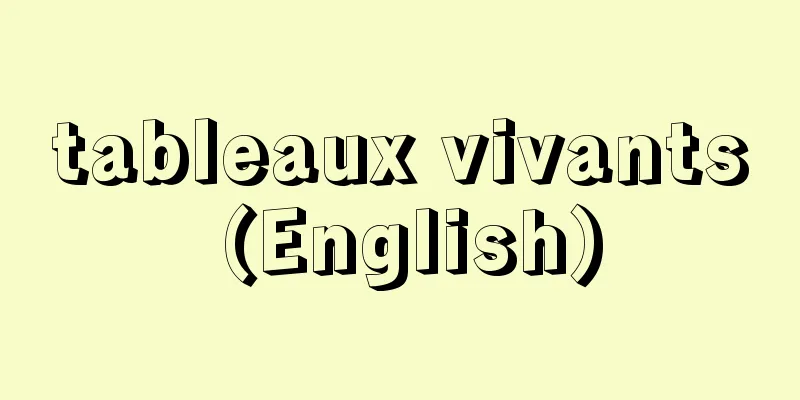Contact potential difference

|
The potential difference that occurs between two metals when they are brought into contact. When two metals, A and B, are brought into contact, for example, electrons move from B to A, forming an electric double layer at the interface, which generates a potential difference. The contact potential difference is independent of the shape and size of the metals, but is sensitive to the surface condition. The contact potential difference can be as much as 1 volt, but it does not allow current to flow. When metals A and B are separated after being brought into contact, A becomes negatively charged and B becomes positively charged. This charging is called contact electricity, and was discovered by Volta in 1797. The mechanism of contact potential difference is as follows. Free electrons in a metal occupy a state ranging from the lowest energy to the Fermi energy E f (which can be thought of as the maximum energy occupied by an electron). The reason that free electrons cannot escape from the metal surface is because there is a wall on the surface with an energy W higher than E f , where W is called the work function. W varies depending on the type of metal. When metals A and B are brought into contact, electrons move from the one with the smaller W (B) to the one with the larger W (A) until their Ef become equal. The moved electrons remain at the boundary surface, with side A negatively charged and side B positively charged , forming an electric double layer. The contact potential difference is equal to the difference in work functions W A - W B. Since the work function is sensitive to the surface condition, this is reflected in the contact potential difference. When the non-contacting sides of metals A and B are connected with a third metal C, an instantaneous electron transfer occurs between the three, but when the Ef of the three become equal, the electron transfer stops and no current can flow. [Miyadai Asanao] [Reference] | |When metal A and metal B are brought into contact with each other, positive and negative charges appear on the surfaces of both metals, forming an electric double layer . Contact of two metals ©Shogakukan "> Mechanism of contact potential difference generation ©Shogakukan "> Electron transfer Source: Shogakukan Encyclopedia Nipponica About Encyclopedia Nipponica Information | Legend |
|
2種の金属を接触させるとき、両金属の間に発生する電位差。2種の金属A、Bを接触させると、たとえばBからAへ電子が移動して、境界面に電気二重層が形成され、これが電位差を生ずる。接触電位差は、対(つい)になる金属の形・大きさには無関係であるが、表面状態に敏感である。接触電位差は1ボルト程度もあるが、これによって電流を流すことはできない。一度接触させたA、Bの金属を引き離すと、AはマイナスにBはプラスに帯電する。この帯電を接触電気とよび、1797年ボルタにより発見された。接触電位差発生の機構は次のようである。金属内の自由電子は、最低エネルギーからフェルミ・エネルギーEf(電子が占有する最高エネルギーと考えてよい)の状態までを占有している。自由電子が金属表面から外に飛び出さないのは、表面にEfよりWだけ高いエネルギーの壁が存在するためで、Wを仕事関数とよぶ。Wは金属の種類により異なる。A、Bの金属を接触させると、Wの小さいほう(B)からWの大きいほう(A)へ、両者のEfが等しくなるまで電子が移動する。移動した電子は境界面にとどまって、A側はマイナスに、B側はプラスに帯電して電気二重層を形成する。接触電位差は仕事関数の差WA-WBに等しい。仕事関数が表面状態に敏感なため、それが接触電位差に反映するのである。A、B金属の接触していない側を第三の金属Cで接続すると、三者の間で瞬間的な電子移動がおこるが、三者のEfが等しくなると電子移動は止まるので、電流を流すことはできない。 [宮台朝直] [参照項目] | |金属Aと金属Bを接触させると、両者の表面に正負の電荷が現れて、電気二重層を形成する©Shogakukan"> 2種の金属の接触 ©Shogakukan"> 接触電位差発生の機構 ©Shogakukan"> 電子の移動 出典 小学館 日本大百科全書(ニッポニカ)日本大百科全書(ニッポニカ)について 情報 | 凡例 |
<<: Catalytic cracking - Session
>>: Snow erosion - Snow erosion
Recommend
Niigata Magistrate - Niigata Bugyo
A job title in the Edo Shogunate. One of the Magi...
Rhodium chloride - rhodium chloride
Rhodium(I), (II), and (III) salts are known, but t...
Takemuki's diary - Takemuki's diary
A diary from the Northern and Southern Court perio...
Veveyse
The Rhône flows into the lake from the eastern pa...
Genus Kayalan
...It is distributed in Honshu, Shikoku, and Kyus...
Tufted Pansy
...It is said that it was introduced to Japan on ...
Albuquerque - Afonso de Albuquerque (English spelling)
Portugal's second Viceroy of India (in office...
Yoshida Kumaji - Yoshida Kumaji
Born: 1874. Yamagata Died in 1964. Tokyo education...
Kajii Gate Site
Another name for Sanzen-in Temple in Ohara, Sakyo ...
One thing, one right - Ichibutsu Ikkenshugi
This is the principle that only one ownership rig...
Mescaline
2-(3,4,5-trimethoxyphenyl)ethylamine. C 11 H 17 N...
Lenaia (English spelling)
…This was called the Great Dionysia, and was cele...
Teaching - Kyokai
〘noun〙① To teach or exhort. ※Jihokushu (c. 1346) v...
Asklepiades (English spelling)
...Hippocrates, born in the middle of the 5th cen...
Reading - Yomi
Reading one character or sentence. How to read. re...







![Hasama [town] - Hasama](/upload/images/67cc8371b48d9.webp)

